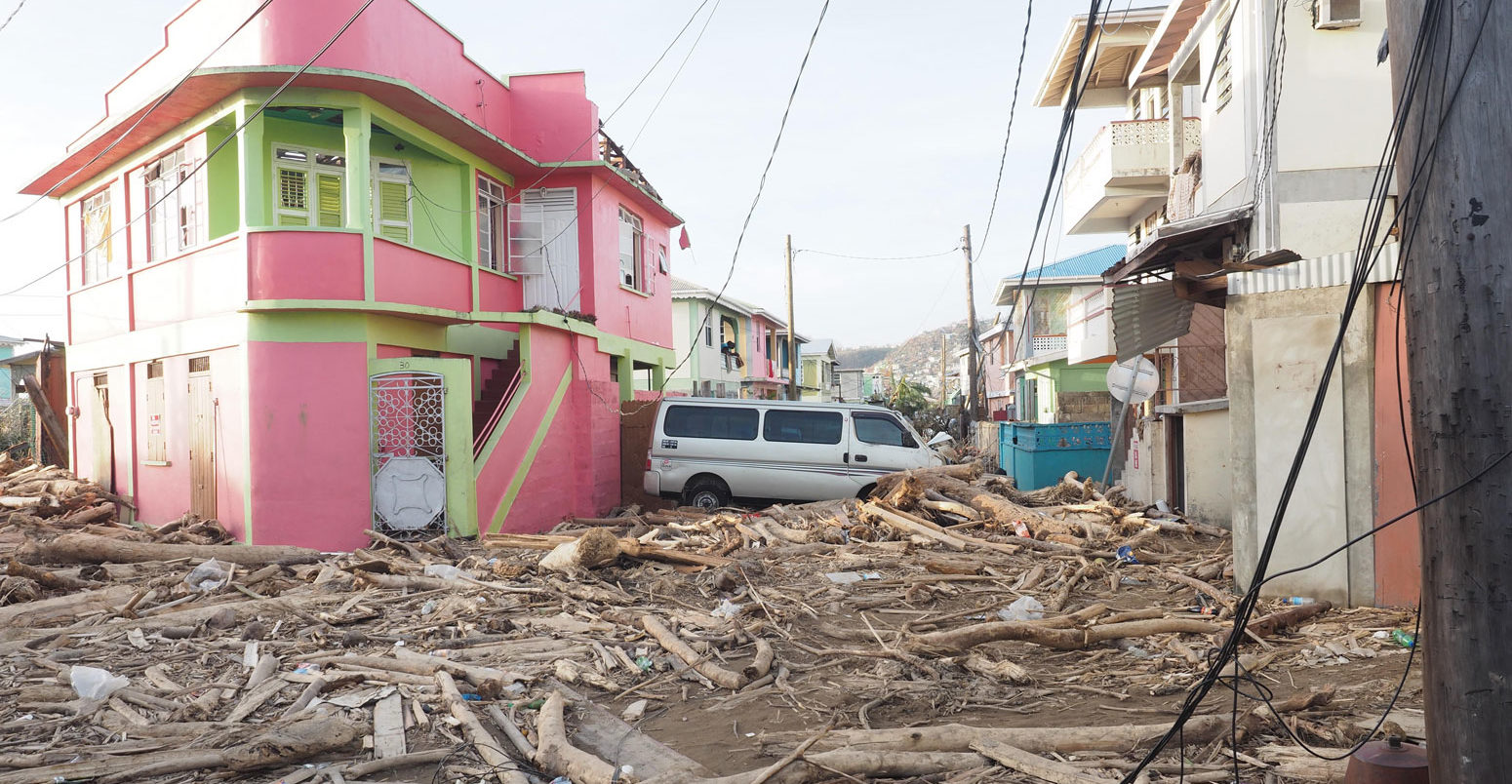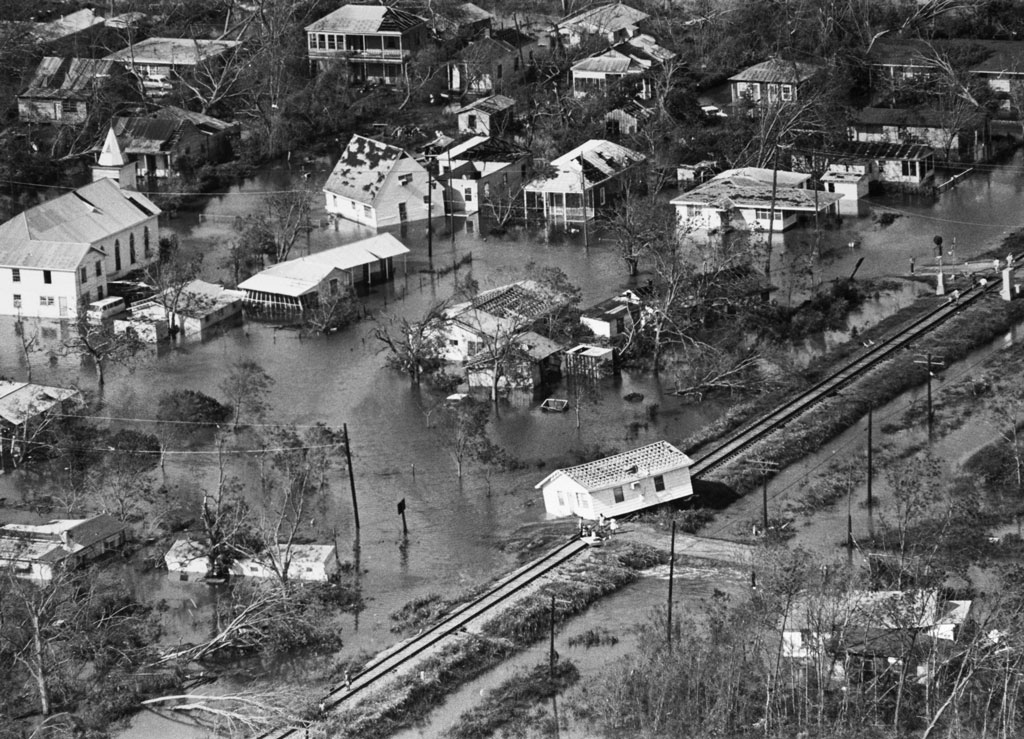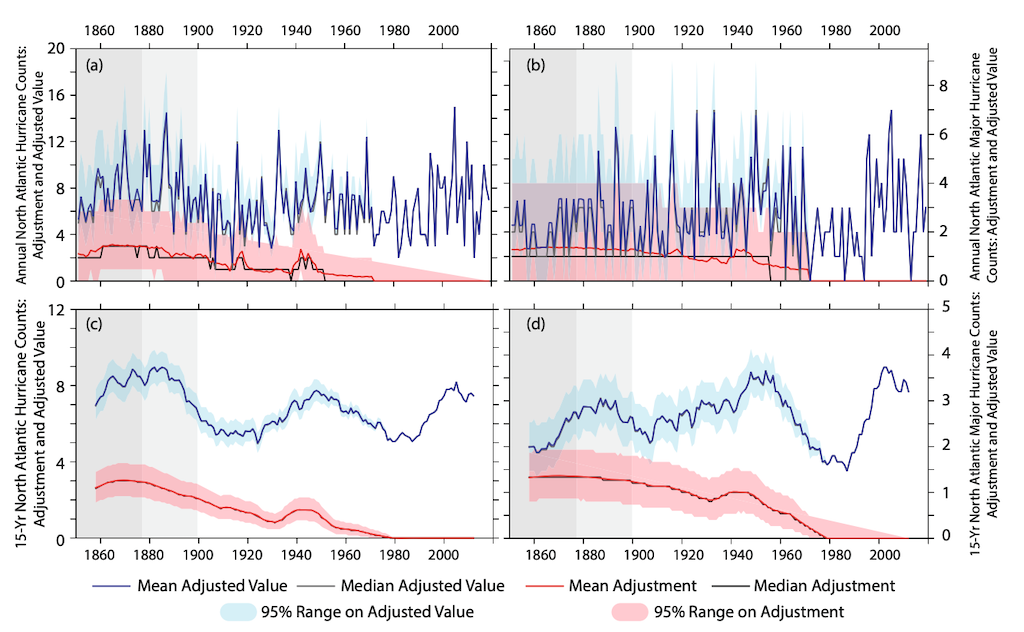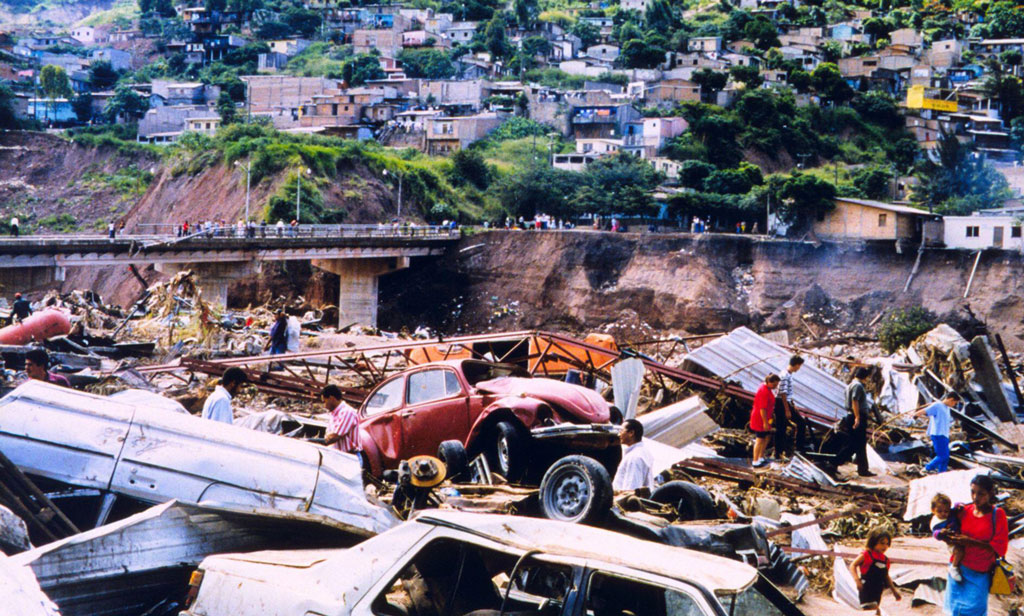
Recent increase in major Atlantic hurricanes may be ‘rebound’ after 1960-1980s lull
Robert McSweeney
07.13.21Robert McSweeney
13.07.2021 | 4:00pmReported increases in major hurricanes in the North Atlantic over the satellite era are potentially a “recovery from a deep minimum in the 1960-1980s”, rather than being part of a longer-term trend, a new study suggests.
The research, published in Nature Communications, develops a new complete record of Atlantic hurricanes from 1851 to 2019, adding in hurricanes that were likely missed by pre-satellite observation methods.
The updated record suggests that increases in the number of Atlantic hurricanes since the 1980s are “not part of a century-scale increase”, but a rebound from a lull caused by natural variability and human-caused air pollution in the second half of the 20th century.
These changes have “probably masked century-scale greenhouse-gas warming contributions to North Atlantic major hurricane frequency”, the paper says.
However, the findings “are specific to the Atlantic and should not be generalised” for tropical cyclones in other parts of the world, the lead author tells Carbon Brief. And other researchers note that they do not “necessarily mean the anthropogenic effect on tropical cyclones is marginal”.
Uncertain observations
Tropical cyclones are powerful storms that develop in the warm ocean waters of the tropics. They are known as “hurricanes” in the North Atlantic and the central and North Pacific, “typhoons” in the north-west Pacific, and simply “tropical cyclones” in the South Pacific and Indian Ocean.
The damage wrought by hurricanes frequently hits the headlines – particularly those storms categorised as “major”, which reach sustained wind speeds of 111 miles per hour or more. In 2017, for example, a string of major hurricanes – including Harvey, Irma and Maria – caused devastation in the US and Caribbean.
Climate model simulations suggest that tropical cyclones will see “a general shift” towards becoming more intense in a warming world, says Dr Shuai Wang, an atmospheric physicist who has recently joined Princeton University and was not involved in the new study.
However, he tells Carbon Brief, “it has been very challenging to identify such trends of tropical cyclone intensity and frequency in observations”.
The 2019 special report on the ocean and cryosphere from the Intergovernmental Panel on Climate Change (IPCC) concluded “there is emerging evidence for an increase in annual global proportion of Category 4 or 5 tropical cyclones in recent decades” – albeit with “low confidence”.
And subsequent research has also identified an increase in major tropical cyclones over the past 40 years – particularly in the North Atlantic.
One of the limiting factors in assessing how tropical cyclones are changing is that satellite records are relatively short, making it more difficult to identify long-term trends amid the natural fluctuations from one year or decade to the next.
As lead author Prof Gabriel Vecchi – professor of geosciences at Princeton University and director of their High Meadows Environmental Institute – explains to Carbon Brief, satellites started recording cyclones in the mid-1960s, but are “more reliable” from the early 1970s.

Before the satellite era, “the occurrence and intensity of hurricanes was largely recorded based on direct observations, either by a hurricane making landfall or passing near land, or by ships at sea encountering hurricanes”, Vecchi says.
However, these longer-term records are patchy, Vecchi notes:
“Because only a fraction of hurricanes make landfall, and because ships at sea don’t fully sample the tropical Atlantic all the time, it is likely that some hurricanes in the pre-satellite era would have been altogether missed or – because the strongest winds of a hurricane are confined to a relatively small area – had their peak intensity underestimated if they were detected.”
As a result, records going back to the 1850s are “contaminated by historical undersampling”, Vecchi says.
Missed hurricanes
In the new study, Vecchi and his colleagues develop a complete “homogenised” record of hurricanes in the North Atlantic, building on their earlier study by extending the record back to 1851 and out to 2019.
Their approach compares satellite data of storm tracks with ship-tracking data from before the satellite era. Using a series of model simulations, they estimate the probability that “a given storm from the satellite era would have been missed had it occurred in a particular pre-satellite year”.
In this way, the authors build up an “estimate of the number of storms that may have occurred and not been detected in each year of the earlier [pre-satellite] era”. The authors then adjusted the existing record to reflect these missed hurricanes.
The figure below shows their new record (dark blue lines) and the size of the adjustments (red) for the frequency of hurricanes (left) and major hurricanes (right) in the North Atlantic since 1851. The charts show the annual hurricane counts (top) and as a 15-year running average (bottom).
The largest adjustments – adding around three hurricanes per year – occur at the very beginning of the record, while there was also a peak during the two world wars when there was a “minimum in ship reports”, the paper says.

Recovery
With the adjustment made to the record, the authors say that “substantial year-to-year and decade-to-decade variability is still present in the data”. However, they find that the most recent period, from 1995 to 2019, “does not stand out as unprecedented” for hurricanes or major hurricanes in the Atlantic.
The authors suggest that, rather than being part of a long-term trend, the increase in hurricane frequency in recent decades “reflect[s] a recovery from a strong minimum in the 1970s and 1980s”.
That lull in Atlantic hurricane activity is likely to be “some combination of multi-decadal [natural] climate variability…and/or non-greenhouse gas forcing, such as variations in anthropogenic or natural aerosols”, the paper says.
Vecchi explains:
“There is evidence that increasing the amount of aerosols – small particles suspended in the atmosphere, such as dust and sulphates – over the Atlantic should lead to a reduction in Atlantic hurricane activity because these particles reduce the amount of sunlight that arrives at the ocean…This reduction of incident sunlight at the ocean surface acts to reduce the energy available for hurricanes.”
After the second world war, “there was rapid industrial build-up in Europe and North America, and sulphates that arose largely from burning coal contributed to a build-up of aerosols over the Atlantic”, Vecchi continues. Together with an “increase in dust coming from the Sahara over the mid-20th century”, these “changes in aerosols are thought to have acted to reduce hurricane activity between the 1960s and 1980s”, he adds.

This finding “supports what many of us have been saying for some time”, says Prof Kerry Emanuel, professor of atmospheric science at the Massachusetts Institute of Technology, who was not involved in the study. He tells Carbon Brief:
“The Atlantic hurricane ‘drought’ of the 1970s and 80s was very likely a result of anthropogenic aerosol forcing and that the uptick since the 1980s is owing mostly or entirely to the cessation of aerosol emissions, thanks to clean air acts.”
Emanuel co-authored a short paper in 2006 that suggested cooling from air pollution in the late 20th century had “offset a substantial fraction of anthropogenic warming in the region [North Atlantic] and has thus likely suppressed even greater potential increases in tropical cyclone activity”.
Human impact
The new paper says the findings “provide a century-scale context” for recent studies that have identified an increase in major hurricanes in the Atlantic since the 1980s.
However, Dr James Kossin – senior scientist with the Climate Service and lead author of one of those studies – points out that his study “looked at global trends, which are certainly smaller, but do remain positive when the Atlantic data are removed”.
Kossin notes that “we also looked at the duration of major hurricane intensities”, while the new study is “counting the storms only – one value per storm – so these are very different measures”. He explains:
“A storm can reach major intensity for one six-hourly estimate or it can be major for days, and each is counted as one in their study. In our study, a storm that was at major intensity for three days would contribute 12 data points. I would argue that this latter value is more relevant to changes in actual risk. This is not to say that their metric isn’t relevant, but it’s somewhat apples to oranges.”
Emanuel adds that the Atlantic region “is a poor barometer of global climate change as it is the site of only about 11% of all tropical cyclones on the planet”.
Vecchi agrees that the “results from this study are specific to the Atlantic and should not be generalised”. He adds:
“Atlantic hurricanes do not necessarily vary in synchrony with those in other basins, and the expected impact from global warming may be different in the Atlantic than the rest of the globe.
“In addition, Atlantic hurricanes have a response to historical aerosol changes and natural multi-decadal climate variability that should be different from that of other basins.”
Despite the importance of natural variability in the changing frequency of hurricanes, it “does not necessarily mean the anthropogenic effect on tropical cyclones is marginal”, notes Wang. Rather, “we should take extra caution to not over-interpolate a relatively short period of storm trend”, he says.
Dr Hiroyuki Murakami – a scientist at the University Corporation for Atmospheric Research (UCAR) and the Geophysical Fluid Dynamics Laboratory in the US, who was not involved in the new study, but has led other research on the shifting spread of cyclones – says the authors “did a great job in reconstructing an observed tropical cyclone dataset”.
The findings “highlight the complex nature of long-term changes in storm activity in the North Atlantic”, he tells Carbon Brief, adding that “I agree that multi-decadal internal variability, anthropogenic aerosols and greenhouse gases have all played important roles for the long-term changes in storm activity”.
Vecchi, G. A. et al. (2021) Changes in Atlantic major hurricane frequency since the late-19th century, Nature Communications, doi:10.1038/s41467-021-24268-5.
-
Recent increase in major Atlantic hurricanes may be ‘rebound’ after 1960-1980s lull

